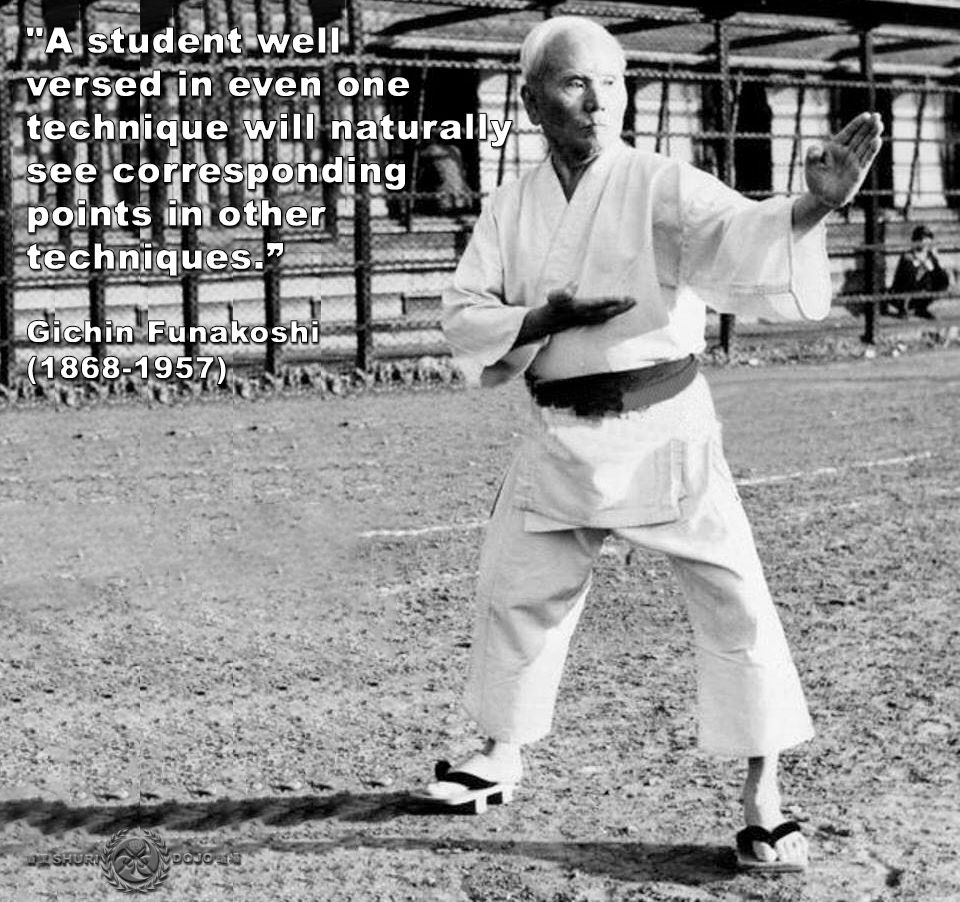
Funakoshi wrote; “A student well versed in even one technique will naturally see corresponding points in other techniques. A upper level punch, a lower punch, a front punch, and a reverse punch, are all essentially the same. Looking over thirty-odd kata, he should be able to see that they are essentially variations on just a handful.”
.
Those that fight and compete in the sporting arena, are unlikely to care too much about bunkai (I have often heard “no-one comes into the dojo to learn kata”), as they see that the application of kata has little relevance to competitive fighting and dojo sparring.
.
Practitioners who are interested in self-protection, should show a keen interest in bunkai. As should the karate-ka who wants a deeper understanding of their karate.
.
Bunkai, as I see it, is not something we do with a partner (or partners), but something we do to an enemy in the context of civilian self-protection. As was its original conception….. and this is the mindset needed to extract the information within.
.
I believe that karate should work in a self-protection situation, and for me the study of bunkai is extremely valuable. The karate-ka who wants to understand his karate deeply also needs to study bunkai, so they know why the kata, and ultimately their karate, is the way it is.
.
Much of what passes for bunkai today is not what I class as traditional (or effective). It’s predominantly shaped from the 1940s onward, and has been hugely influenced by the modern sport version of karate.
.
Some practitioners see kata as a “bundle of techniques” one after the other. It really is an inferior way to learn and think about them. They may have the individual “strands”, but they aren’t seeing the tapestry. When they see how the various strands interconnect, they are then able to see the system the kata records.
.
Context is everything when studying kata. As well as the punches and strikes that everyone sees on the “surface” of their initial analysis, kata contain escapes, throws, locks etc., but the underlying principle should be a strategy of quick incapacitation and escape.
.
In the “bundle of techniques” approach, we often fail to see the presence of any coherent tactics guiding the application of the kata methods (i.e. its “do this” and no thought to “what if”). Any interpretation of kata which lacks tactics is likewise flawed and certainly wide of the mark.
.
Remember that simplicity, effectiveness and a clear strategy is a prerequisite for pragmatic combative karate. ![]()
![]()
.
.
With thanks to Iain Abernethy
.
.
